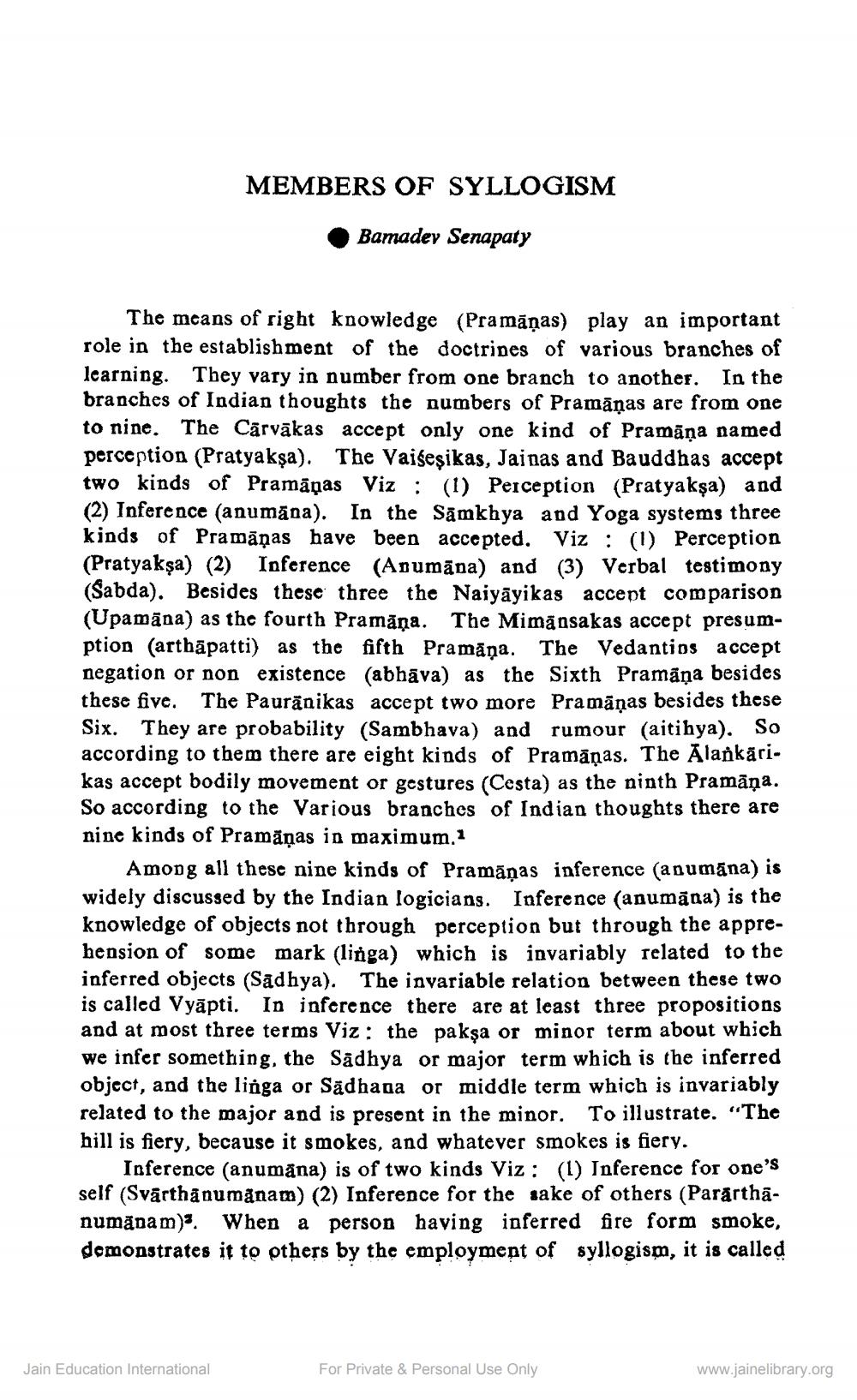________________
MEMBERS OF SYLLOGISM Bamadev Senapaty
The means of right knowledge (Pramāņas) play an important role in the establishment of the doctrines of various branches of learning. They vary in number from one branch to another. In the branches of Indian thoughts the numbers of Pramāņas are from one to nine. The Carvākas accept only one kind of Pramāņa named perception (Pratyakṣa). The Vaiśeşikas, Jainas and Bauddhas accept two kinds of Pramaņas Viz (1) Perception (Pratyakṣa) and (2) Inference (anumana). In the Samkhya and Yoga systems three kinds of Pramaņas have been accepted. Viz (1) Perception (Pratyaksa) (2) Inference (Anumāna) and (3) Verbal testimony (Sabda). Besides these three the Naiyayikas accept comparison (Upamana) as the fourth Pramāņa. The Mimānsakas accept presumption (arthāpatti) as the fifth Pramana. The Vedantins accept negation or non existence (abhava) as the Sixth Pramāṇa besides these five. The Pauranikas accept two more Pramāņas besides these Six. They are probability (Sambhava) and rumour (aitihya). So according to them there are eight kinds of Pramāņas. The Alankärikas accept bodily movement or gestures (Cesta) as the ninth Pramāņa. So according to the Various branches of Indian thoughts there are nine kinds of Pramanas in maximum.1
Among all these nine kinds of Pramāņas inference (anumāna) is widely discussed by the Indian logicians. Inference (anumāna) is the knowledge of objects not through perception but through the apprehension of some mark (linga) which is invariably related to the inferred objects (Sadhya). The invariable relation between these two is called Vyapti. In inference there are at least three propositions and at most three terms Viz: the paksa or minor term about which we infer something, the Sadhya or major term which is the inferred object, and the linga or Sadhana or middle term which is invariably related to the major and is present in the minor. To illustrate. "The hill is fiery, because it smokes, and whatever smokes is fiery.
Inference (anumana) is of two kinds Viz: (1) Inference for one's self (Svarthanumanam) (2) Inference for the sake of others (Parārthānumānam)". When a person having inferred fire form smoke, demonstrates it to others by the employment of syllogism, it is called
Jain Education International
For Private & Personal Use Only
www.jainelibrary.org




